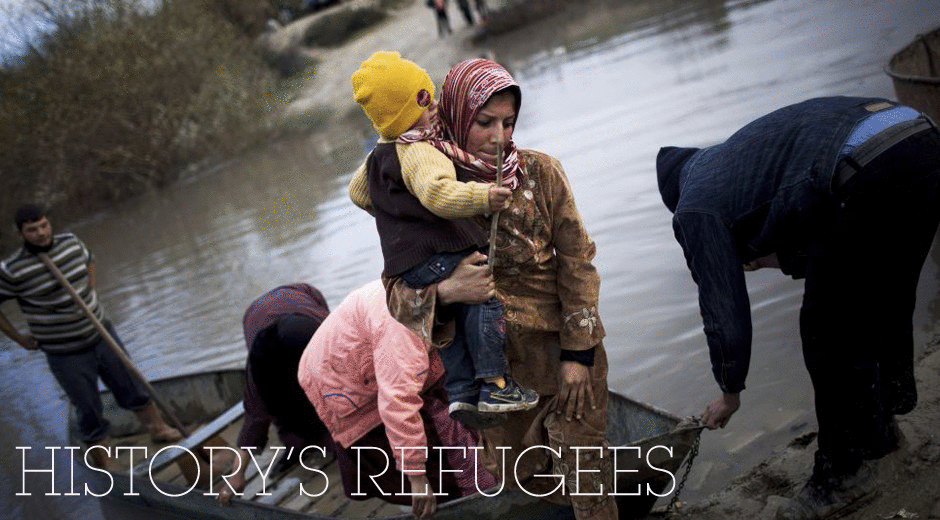Israelites
Canaan • 740 BC
When Assyrian rulers conquered the land of ancient Israel, 10 of the legendary 12 tribes were expelled from these lands. How many there were, and where they ended up remains a subject of highly contentious historical and religious debate.
My wife and my kids, they are packed up and leave me. Darling, she said, I was yours to be seen. Poor me, the Israelite. Aah.
Edict of Fontainebleau
France • 1685
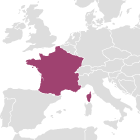
When Louis XIV of France issued an edict that meant the Huguenots risked state persecution if they practised their Protestant faith freely, he created one of the first recognised displacements of a people across nation states. Their exact number isn’t known, but historians estimate that around 200,000 fled their homes over the next 20 years, around a quarter of them coming to England and the rest settling in the Netherlands, Germany, especially Prussia, Switzerland, Scandinavia, and Russia.
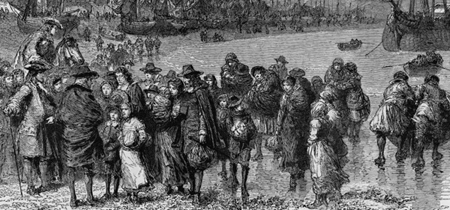
Those that remained in France faced continued injustice - from having their marriages, and consequently their children, delegitimised by the state, to having their churches burnt down. Those that left made new lives for themselves abroad, many arriving penniless but with profitable business skills.
Muhacirs
Ottoman Empire • 1783
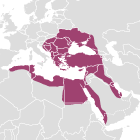
In the space of 150 years, 5 to 7 million Muslims arrived from other countries in what is today Turkey. From the 750,000 Bulgarians who left during the Russo-Turkish war (about a quarter of whom died on the way) to the 15,000 Turkish-Cypriots who left the island after it was leased to Great Britain - Turkey experienced a radical transformation as Muslims from Caucasus, Crimea, Crete, Greece, Romania and Yugoslavia arrived. Their descendants remain there, accounting for one in three people in Turkey today.
Pogroms
Russia • 1881
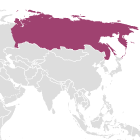
The assassination of Tsar Alexander II in 1881 unleashed a wave of brutal anti-Jewish sentiment in Russia. A weak economy and an irresponsible press that encouraged the notion of the Jew as the enemy resulted in rioting and widespread attacks on Jewish homes that were to last three years. Almost two decades later, latent prejudice was revealed again when Jews once again found themselves the subject of attack, this time a much bloodier one that left thousands dead. Their treatment prompted a mass exodus of some 2 million Jews towards the UK, US and elsewhere in Europe.
World War I
Europe • 1914
World War I marked a rupture in Europe’s recent experience of refugees. During the German invasion of Belgium, massacres of thousands of civilians and the destruction of buildings led to an exodus of more than a million people. Almost a quarter of them came to England, where the British government had offered "victims of war the hospitality of the British nation". Most Belgian refugees returned to Belgium at the end of World War I despite having having been able to assimilate smoothly in the UK.
Belgium was not the only refugee crisis to emerge from World War I. After Austria-Hungary declared war on, and subsequently invaded Serbia, tens of thousands of Serbians were forced to leave their homes.
Some of the largest atrocities committed during and after World War I were directed at the Armenians. The population of 2 million was decimated by what was later recognised as the first genocide of the 20th century. Systematic persecution under the Ottoman empire meant that half of that population were dead by 1918 and hundreds of thousands were homeless and stateless refugees. Today, the Armenian diaspora is around 5 million in number, while there are just 3.3 million in what is today the republic of Armenia.
By September 1939, approximately 282,000 Jews had left Germany and 117,000 from annexed Austria. Of these, some 95,000 emigrated to the United States, 60,000 to Palestine, 40,000 to Great Britain, and about 75,000 to Central and South America, with the largest numbers entering Argentina, Brazil, Chile, and Bolivia. More than 18,000 Jews from the German Reich were also able to find refuge in Shanghai, in Japanese-occupied China. By October 1941, when Jewish emigration was officially forbidden, the number of Jews in Germany had declined to 163,000. The vast majority of those Jews still in Germany were murdered in Nazi camps and ghettos during the Holocaust. - US Holocaust Museum
World War II
Europe • 1945
The historic movements of people during the first world war would pale in comparison some 27 years later when World War II broke out. By the time it ended, there would be more than 40 million refugees in Europe alone. The scale of the disaster was such that international law and international organisations tasked to deal with refugees were urgently created and quickly evolved to become the foundation that is still relied upon today.
1938: Intergovernmental Committee on Refugees was created to facilitate a more co-ordinated approach to the resettlement of refugees
1943: United Nations Relief and Rehabilitation Administration
1946: International Refugee Organisation created
1948: Universal Declaration of Human Rights
1949: Geneva conventions - a series of four treaties (subsequently followed by three additional protocols) that set out in international law what is humanitarian conduct during armed conflict, including the treatment of civilians.
1950: Office of the United Nations High Commissioner for Refugees (UNHCR) was established
1951: Convention relating to the Status of Refugees became the corner stone of international law on refugees.
Even before the war’s end, thousands of Germans began to flee Eastern Europe. Most of those that remained were forcibly removed. In Czechoslovakia, more than 2 million were dumped over the country’s border. In Poland, Germans were rounded up before being removed by authorities. In Romania, around 400,000 Germans left their homes while Yugoslavia was virtually emptied of its 500,000-strong German community.
Nakba
Palestine • 1948
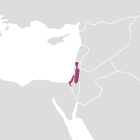
Nowhere are numbers on refugees more contentious than the 1948 Palestinian exodus. An attack by a Zionist military group on an Arab village realised the Palestinians’ worst fears and combined with Zionist expulsion orders, military advances, virtually non-existent Palestinian leadership and unwillingness to live under Jewish control on their homeland. The result was a mass exodus of around 80% of Arabs on the land that was to become Israel. Later absentees property law in Israel would prevent the return of those Arabs. Nakba, meaning "catastrophe" is commemorated on 15 May each year. The UN set up a special agency, UNRWA, to deal with the enormous numbers of refugees requiring assistance that now number around 5 million.
Idi Amin’s Order
Uganda • 1972

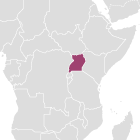
In August 1972, General Idi Amin, then military ruler of Uganda, accused Asians resident in the country of being "bloodsuckers" and gave them 90 days to leave the country. Since Amin seized power in a military coup in 1971, he had increasingly spread propaganda about the country’s minorities, focusing on the Indian and Pakistani communities. Many of them had lived in the country for more than 100 years.
Of the approximately 90,000 Asians who were expelled, around 50,000 came to the UK. A small proportion went to India and some of the Indian Muslim community left for Canada. This wealthy group, which had a large stake in Uganda’s economy, had all of their assets confiscated, bank accounts closed, jewellery stolen. The 5,000-6,000 companies belonging to Uganda’s Asians were reallocated among government bodies and individuals.
There remain around 12,000 Indians in Uganda today.
Puppet governments
Afghanistan • 1979
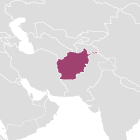
Afghanistan could be said to have had a refugee "crisis" as far back as 1979 when the Soviet Union occupied the country, sending as many as 5 million fleeing. The largest group ended up in Pakistan (they and their descendants number more than 1.5 million today). Repatriation rates have increased over the past decade.
Since 1990 the number of refugees each year has not fallen below 2 million as the chart below showing refugees originating from Afghanistan demonstrates - a sizeable fraction of the country’s 34 million people.
Those who return do so to face a changed country. From knowing where mines are to understanding what their legal rights are, many former refugees may feel alien in what was once their homes.
Balkans conflicts
Balkans • 1992
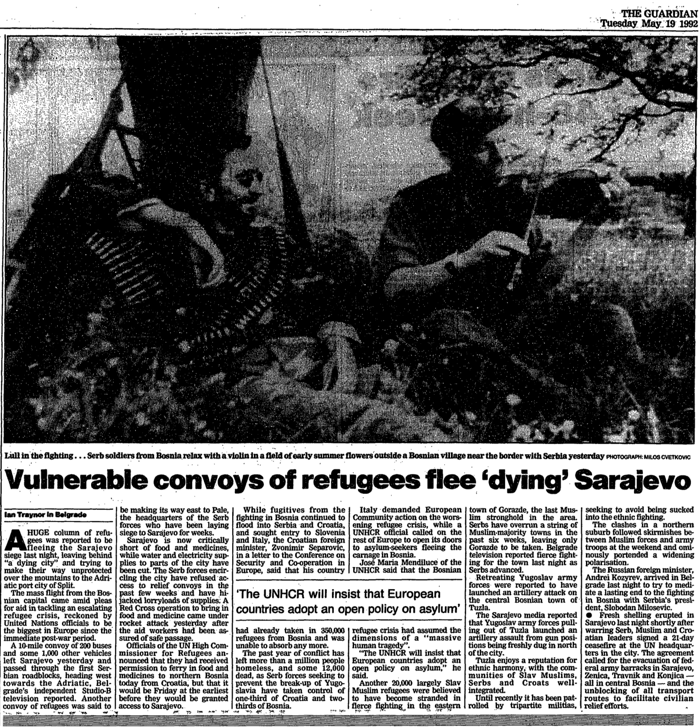
The Bosnian war of 1992-1995 left 200,000 dead and forced 2.7 million more to flee - making it the largest displacement of people in Europe since the second world war. Half of Bosnia’s entire population were displaced. Tens of thousands were taken in by western nations, chief among them the US and Germany. Hundreds of thousands of Serbs were also displaced by the Yugoslav wars - an estimated 700,000 sought refuge in Serbia.
Throughout the Balkans more than 2.5 million people have returned home. But more than two decades on, the UN is still attempting to provide 620,000 refugees and internally displaced people in the region with the assistance they need.
Great Lakes Refugee Crisis
Rwanda • 1994
Genocide is defined as "the act of committing certain crimes, including the killing of members of the group or causing serious physical or mental harm to "members of the group with the intent to destroy, in whole or in part, a national, racial or religious group, as such"
In the aftermath of the genocidal mass slaughter in 1994 of more than 500,000 Tutsis by Hutus in Rwanda, there was a mass exodus of more than 2 million people from the country to neighbouring countries. Many settled in massive camps containing tens of thousands of people where mortality rates were exceptionally high. The camps became increasingly militarised and contributed to the escalation of further conflict in the region.
War in Darfur
Sudan • 2003
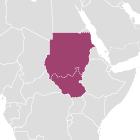
When war broke out in the Darfur region of Sudan, it brought with it the deaths of 200,000 and the mass displacement of more than 2.5 million people from their homes. Innovations in helped to show why they left - more than 3,300 villages had been destroyed by 2009.
Today, more than 2.6 million IDPs remain in Darfur while more than 250,000 are living in refugee camps in Chad alone.
Iraq war
Iraq • 2003
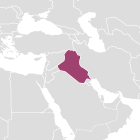
Refugees have been a humanitarian issue for Iraq since its war with Iran in the 1980s, but the 2003 invasion resulted in a huge increase in their number. The UN estimates that today 4.7 million Iraqis have left their homes (around 1 in 6 Iraqis), more than 2 million of whom left the country altogether. Most settled in neighbouring Jordan, Lebanon and Syria, living without the protection of refugee laws in those countries and, in the case of Syria, facing renewed violence. As a result, some have started to return to Iraq and have been joined by Syrians attempting to escape the same conflict.
Colombian conflict
Colombia
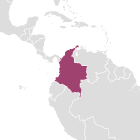
One of the least reported major refugee crises in the world, Colombia has witnessed millions leaving their homes - but they do not count as refugees because they have not crossed an international boundary. Colombia’s low-level conflict started in the 60s and over the decades, the UN estimates that almost 4 million have left their homes, almost 10% of the population. Only 400,000 of these have been able to leave the country, and the migration crisis has not attracted the attention of the international community that many argue it warrants.

Syrian civil war
Syria • 2011
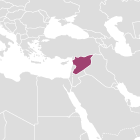
What started as protests not unlike those that had been seen in other Arab countries has degenerated into a civil war stalemate. To find out more about how many Syrians have become refugees and read Syrians’ own stories of their displacement, follow the link to our special reports.
Though it’s thelatest chapter in history’s biggest refugee movements, it is unlikely to be the last.


